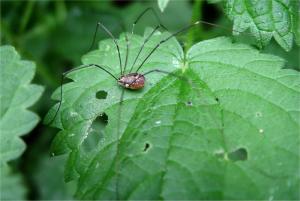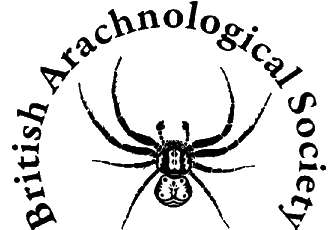
With their globular body and long thin legs, Harvestmen are unmistakable. Unlike true spiders, the body of a Harvestman consists of a single part rather than two. Many have very long legs and suspend their body low near the ground with their legs bent above them, thus forming a capital 'M' shape with the body at the central V of the M. Long legs allow the animal to span large distances between leaves and twigs as it climbs about vegetation. Not all species are long-legged, certain secretive soil and litter species have much shorter legs. World-wide there are over 3,500 species, of which only a couple of dozen are found in Britain.
A careful examination of the body will reveal that most have two eyes (some foreign species are blind) situated on a knob-like structure called the 'ocular tubercle', near the middle of the body. Despite what is sometimes believed, they are not at all venomous since they lack the venom glands present in spiders and pseudoscorpions. For defence, they have a pair of 'smelly' or odiferous glands. At their front-end is a pair of pincer-like jaws, the chelicerae. To either side of these is a pair of jointed, leg-like structures called pedipalps. In some, such as the Leiobunum species, the second pair of legs are particularly long and instead of being used for walking and climbing they act as 'feelers', exploring the environment ahead.
Harvestmen will eat all kinds of food. Their omnivorous habits mean they will eat dead squashed slugs, bird droppings, jam, fruit and other plant remains, as well as live small invertebrates that they might catch. Generally they are nocturnal and can be found hiding under ivy, amongst grass stems, and other vegetation, under stones, bark and logs and inside cool damp buildings like sheds and outside toilets. Their common name derives from the fact that most are mature in autumn, at the time of harvesting.
